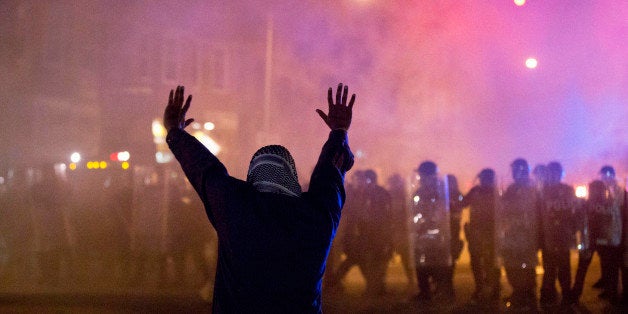
This week, I keep the communities and families of Nepal and Baltimore in prayerful consideration. While the nation-state of Nepal and the city of Baltimore are thousands of miles apart, and their respective tragedies seem completely unrelated, there is a connection between the two, in my mind's eye.
Earthquakes (and typhoons, and hurricanes, and disease outbreaks) occurring in resource-challenged, poverty-laden communities have a disproportionately pervasive impact on the population. Infrastructure is weak or lacking. Housing and buildings are less well constructed. Medical, public health and emergency response capacities are often thin and compromised even before the onset of the disaster. This is why the death toll in a developing nation affected by such disasters is often unconscionably high -- well into the thousands, compared to similar events in more developed nations.
The city of Baltimore -- as in Ferguson, Missouri before it -- while not physically devastated by an earthquake, is indeed experiencing shocking tremors of its civic psyche. Too many African-American communities like Ferguson and Baltimore suffer from a chronic lack of opportunity and hope, in combination with the visceral frustration of racism, marginalization, stigmatization and oppression. A Freddie Gray incident, then, triggers a shift in an already fragile fault line, and an earthquake of community protest and violence erupts. While it certainly can be argued that violence in any form is "senseless," the violence of Ferguson and Baltimore "makes sense" to me, because I can understand its roots -- even while, at the very same time, repudiating it. By comparison, the school shootings at Sandy Hook and Columbine make no sense to me whatsoever.
Webster's Dictionary defines the term "resiliency" as: the ability to recover rapidly, as from misfortune; buoyancy. Communities, families and people can indeed be built to possess greater resiliency -- and not only weather misfortune and tragedy -- but coalesce, thrive and strengthen as a result. In a bumper sticker analogy, this is what "Boston Strong" was about in the wake of the horrific Boston Marathon bombings: We are resilient. We have strength. We have assets. We will endure, and we will emerge stronger on the other side of this.
But resiliency requires a basic level of hope, of promise, of optimism, of something to believe in. Undoubtedly there are community and civic leaders in Baltimore who will prove their measure of resiliency, and are already plotting and acting on how to infuse hope and optimism into a future for disaffected and disengaged young people. This week, from Baltimore, our television screens are filled with images of rock throwers, burning vehicles, broken glass and black males in handcuffs. The work of resiliency-building and trust-building will unfold largely out of the view of news cameras, quietly, earnestly, purposefully. Like Nepal, the cameras will disappear once the rubble settles in, and the quietly heroic work of rebuilding unfolds.
The work of resiliency, and optimism, and hope and promise occurs in the "in-between": between the tragic moment of police shootings and civic and civil unrest. How do we learn and grow from Ferguson and Baltimore, listening better, engaging more intently, building trust, strengthening accountability? Are we learning anything? For all of the criticism heaped on police departments and local law enforcement -- and some of it deservedly so -- the matter of race and hopelessness goes well beyond professionals who wear the badge and blue uniform.
I wonder, sometimes, if we have lost our eyes on the prize. While there is much to be said for greater dignity and professionalism in the behavior of local law enforcement, I cannot ascribe to the notion that, as it relates to the crisis of young men of color, the best we should hope for is for police officers to more humanely and professionally handcuff and detain our black young men once they have been arrested. The real prize is to instill a culture of meaningful hope and optimism in these young people, such that the reason for a police encounter is reduced or averted in the first place.
This is why, at both a personal and professional level, I am committed to the work of boys and young men of color, as embodied by President Obama's My Brother's Keeper. While some have criticized the President for not being more visibly engaged (or is it enraged?) after the Baltimore and Ferguson tragedies, the activity of My Brother's Keeper is actually the work that is needed: the work of resiliency, opportunity and hope.
